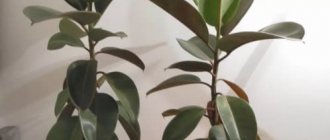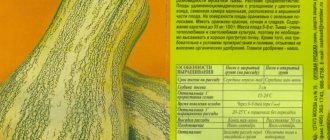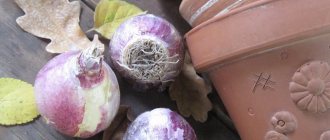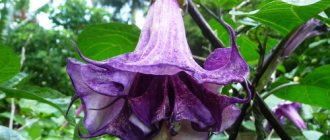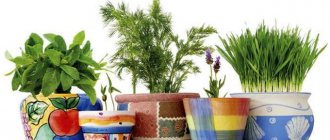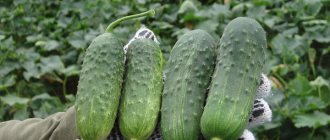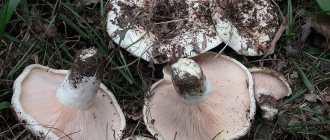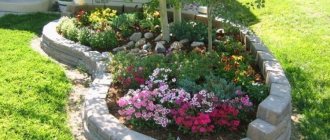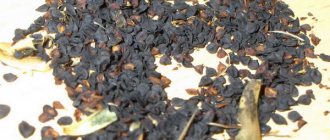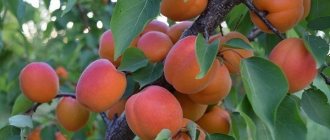Ah, beauty, the color of poppies... It’s not for nothing that indescribable beauty is compared to blooming poppies. Blooming fields of wild poppies, swaying from a light breeze, delight and fascinate. It’s as if the petals, woven from the finest silk, are painted not only in a rich red color. There are also white, yellow, purple and pink flowers. In the garden, poppy fits perfectly into Moorish lawns and mixborders. Cutely decorates front gardens.
It is not for nothing that poppy is called “a flower for the lazy man”, because it is unpretentious in care and does not make any special demands on soils. Therefore, it is very often used in garden design. But it should be remembered that not all types and varieties of poppy can be grown on the site. There are species and varieties, the cultivation of which can result in problems with law enforcement agencies.
In this article we will tell you which types can be placed on the site, and which ones are better to avoid.
What's wrong with a flower garden with poppies?
Of course, a simple florist is unlikely to be given a real sentence. First, they will warn you and ask you to pull out all poppy flowers and dispose of them. If you disobey or zealously defend the flowers, driving police officers away from the flower bed with a pitchfork or rake, you will receive a fine. Well, those who grow poppy products on a large and especially large scale (this does not apply to flower growers) face a serious sentence.
In addition to police officers, poppy flowers can also attract people who are heavily hooked on poppy intoxication to your site. Therefore, before planting poppies, weigh the pros and cons. Moreover, buns with poppy seeds can be bought in any store.
source
Poppy, of course, is an extremely beautiful plant that has already won the hearts of many. At first glance, the question of whether you can grow poppy in your garden sounds funny. It would seem like an ordinary flower, what is forbidden here? However, if you decide to grow poppy in your garden, remember that drugs are made from it. Therefore, certain types of poppies are prohibited from being planted.
Poppy – banned or not?
Adding an article to a new collection
Red fields of wild poppies, huge bright flowers on thin stems, smoothly swaying in the wind - a truly mesmerizing sight. But these plants also bloom with white, purple, yellow, and pink flowers - how could you not dream of having such beauty on your site!
Why not get one - in addition to all its decorative advantages, this plant is also extremely easy to care for; it is constantly included in the list of plants “for the lazy gardener.”
But be careful - under the guise of a harmless, charming flower, they can legally sell you a plant, for the cultivation of which you will face absolutely serious administrative and criminal liability!
What varieties and types of poppy are prohibited for cultivation, and which ones can be safely sown on a country plot? Let's figure it out together.
Which poppies are suitable for growing?
The number of safe varieties significantly exceeds those for which they can be held accountable. The most beautiful among them will be:
- self-seeding;
- modified poppy;
- peacock;
- holostem.
The first, poppy, is perhaps the most famous of all listed in the article. In addition, it is a perennial, and therefore will delight you with its red color year after year.
Less common are the second and third grades. They are, alas, just annuals, but they bloom incredibly beautifully. And yet they can be propagated by seeds.
Chemical composition and use of opium poppy
All properties of the opium poppy are determined by its chemical composition, so its use for medical purposes began with the study of these characteristics.
Studying the composition
During the entire period of development, the chemical composition of the described poppy may change. Thus, at the initial stage, about 20% of dry milky juice, known as opium, is present in the above-ground part of the plant. It is in its composition that it contains 10-25% of the total amount of isoquinoline alkaloids, half of which is represented by the narcotic substance morphine.
The rest consists of papaverine, codeine, thebaine and some other components used today for medical purposes. At the same time, only 0.3-0.5% morphine can be found in fully ripened Maslenitsa poppy pods, which is much less than in the initial stages of fruit formation.
Benefits and applications in medicine
Morphine, codeine and thebaine, isolated from opium, are widely used in modern official medicine because they have the following properties:
- morphine can cope even with severe pain and is considered a narcotic analgesic (its use is appropriate for serious injuries, cancer and heart problems);
- codeine reduces the irritability of the nerve center and is successfully used to create antitussive drugs;
- thebaine , like morphine, is an analgesic of narcotic origin, thanks to which it helps to cope with serious pain attacks.
Among the most popular products with morphine are one percent solution for injection "Morphine hydrochloride", injection solutions "Morfilong" (0.5%) and "Omnopon" (1% or 2%). All of them are used as strong painkillers. Codeine is an integral part of the drugs Codelac, Codterpin and Bekhterev's mixture.
Types of poppies prohibited for cultivation
Let's find out which poppies should not be granted registration in your garden. These include all types that contain narcotic and psychotropic substances
. This:
- poppy
(Papaver somniferum), - bristlecone poppy
(P. setigerum) - bract poppy
(P. bracteatum) - and, alas, the most beautiful member of the family is the cultivated oriental poppy (
P. orientale).
Unpretentious and winter-hardy oriental poppy
enviably handsome. But be careful with this beauty: the plant contains the alkaloid oripavine, which is a toxic substance.
Recent studies have shown that it contains the alkaloid oripavine, which is classified as a toxic substance.
By the way, forbidden fatal beauties can be identified by the size of their seed pods
: if they are large, then you should not mess with such plants.
Oriental poppies: description and plant care
The Oriental poppy is a perennial plant that has some of the most recognizable flowers on the planet. Wide fiery red petals cannot be confused with other flowers. The best artists in the world were inspired by them, they are depicted in legendary paintings that are exhibited in major museums around the world.
Not everyone can afford to grow oriental poppy in the garden. Firstly, you should know the rules of care, and secondly, you will have to take risks, because the oriental poppy is considered a drug, its cultivation is illegal in our country.
What poppies can be grown on the plot?
But what should you do if you really want to recreate a clearing on your property with poppies, cornflowers, daisies and other meadow herbs? Take heart, because the genus Papaver has more than 100 species, and only a few are prohibited. You can choose from annual and perennial poppies
.
The most famous representative of the first group is considered to be the self-sowing poppy
(P. rhoeas).
It fits perfectly into natural-style plantings. This annual blooms profusely from June until autumn. Less common are the stunningly beautiful annual modified poppy
(P. commutatum) and
peacock poppy
(P. pavoninum).
Among the perennials, it is worth highlighting the holostem poppy
(P. nudicaule), which blooms from May until late autumn. Depending on the variety, its flowers are double and simple, white, yellow and orange, with a diameter of 2.5-6 cm (in the compact variety 'Popsale' they are as much as 10 cm in diameter). So, as we see, there are plenty of legal poppies. Choose yours!
A classic summer tandem - red poppies and blue cornflowers. To recreate such a lawn, select a larger area - this will make the composition look especially impressive.
Poppy petals 'Helen von Stein'
in the bud they look like they are crushed. As the flower opens, the petals become fully erect.
Incredibly bright colors of the poppy
. He is especially good in the company of his fellows.
Poppy modified 'Ladybird'
blooms from July to September. In the photo it is harmoniously complemented by spurge and decorative onions.
Poppy is safe
In general, there are several dozen species of poppies, beautiful herbaceous plants of the Poppy family - and you can theoretically safely grow most of them on your site.
Some of them are beautiful-flowering annuals, others are perennials. Some of the species are especially rare and are under protection, many others in the wild inhabit entire endless fields, usually in arid places - steppes, semi-deserts, deserts, dry rocky mountain slopes. But poppy species are found in temperate latitudes, subtropical latitudes, and less often in cold zones. In autumn, poppy seeds ripen numerous small seeds, “packed” into pot-bellied fruits and capsule heads.
People noticed this plant a long time ago and began to cultivate it - at first only because of the large, single, beautiful flowers on long peduncles. Later it turned out that poppy seeds are an excellent filling for confectionery products and a source of poppy oil.
Today, food poppy is mainly cultivated in the Czech Republic and Turkey.
For many ancient peoples, the poppy played an important role in folklore and mythology; it was a symbol of fertility, sometimes sleep or death (we will clarify why later).
The most common species that grows “savage” in our territories in fields and along roads is the self-seeding poppy, also known as field poppy, also known as wild poppy ( Papaver rhoeas ).
This annual is considered almost the most undemanding flowerbed plant. Its bright, large, fragrant flowers with “silk” petals are usually bright scarlet, but can be purple, white, or pink, for which they are highly valued by landscape designers. And many varieties of this poppy with double or cut petals have been cultivated. It blooms from April to July and bears fruit in August-September.
The seedling method is not used to grow such poppies, because they grow well when sown directly into the ground in spring. Some gardeners prefer to sow poppies before winter so that seedlings appear as early as possible in the spring.
Before sowing, poppy seeds are stratified and then scattered on moist sandy loam or loamy dug soil. The distance between plants should be about 25 cm. After 4 weeks, the seedlings need to be thinned out, and then regularly watered and removed from weeds.
Perhaps the only requirement when planting poppies is to avoid stagnant water and close groundwater. The plants themselves are unpretentious and are perfect for Moorish lawns or natural-style gardens.
In addition to the annual self-sown poppy, alpine poppy, Atlantic poppy, holostem poppy, etc. are grown all over the world as ornamental plants.
But why are some types of poppy banned? And what kind of poppy is this?
Unpretentiousness is their strong point
Poppies are photophilous, so choose sunny places for them.
These plants are also cold-resistant, and perennial species are also winter-hardy, so you can sow the seeds directly into open ground in early spring (winter sowing is also recommended).
As for the soil, these beauties are undemanding to it. And their maintenance is minimal. It comes down to loosening, weeding and watering during dry periods (poppy does not tolerate stagnant moisture). But “pets” love to eat: feed them with organic and mineral fertilizers,
then the leaves will be rich green and the flowers will be large and bright.
Poppies do not tolerate transplantation
because they have a taproot system. Therefore, sow the seeds immediately into the flower garden and thin out the seedlings later.
I really like poppies, so I recently bought several bags of seeds of different varieties. But I’m afraid to sow: one of my friends had red double poppies blooming last year, so the police pulled them all out, and then they repeatedly called her to the prosecutor’s office. So I’m worried that the same thing might happen to me.
By law, it is prohibited to grow only the soporific poppy (Papaver somniferum), which is also called opium poppy, on household plots and summer cottages. Externally, it is a herbaceous annual plant 30-100 cm high. The leaves of the plant are alternate, pinnately dissected, and have oblong-lanceolate lobes. The flowers are often white or pink, sometimes red, and have four petals and many stamens. The fruit, like other poppies, is a capsule.
To accuse someone of unauthorized cultivation of a narcotic potion, a conclusion from a specialist botanist is required that the plant grown is indeed poppy. However, attention to nuances is not always inherent in ordinary police officers. Especially if there is a convenient reason to improve statistics. Your friend was convinced of this.
As a result, the conclusion suggests itself: even decorative poppies are best grown carefully. Several years ago, our editor received a letter from a reader who grew poppies in a flower garden and was able to fully “enjoy” communication with the local police thanks to the initiative of her neighbor. The women quarreled over something, and the neighbor found a win-win way to take revenge: she told the district police officer that they were growing a narcotic potion next to her and supplying it to those who wanted it.
If you do not do anything illegal, then most likely you will get away with fear and minor troubles. But there is another danger - drug addicts themselves notice everything that can be used. You probably know that even harmless medicines, after a series of manipulations, can be turned into a source of “dreams,” and most types of poppy contain at least a small percentage of narcotic substances, albeit significantly lower than the soporific poppy. Why not raw materials for “experiments”?
In this regard, I remember the incident
, which happened to one of my grandmother’s friends. The old woman sowed some poppy seeds in the garden to bless them in the church. Her garden was not on the corner and was not visible from the street, so she was amazed when one morning she discovered a “visitor”. The meeting ended with several bruises and a dislocated arm for her, but who can predict the actions of a mentally disabled person? If I were you, I would prefer not to take risks. However, if among your seeds there is an Orange variety with bright orange petals, I think you can plant it - it is unlikely to cause unwanted associations.
Many in Russia were amazed by what happened to Perm labor veteran Yegor Mikhailov. My grandfather was sentenced to a suspended sentence for growing opium poppies on his property. This story was reported by many media outlets, including RIA Novosti. The trouble with the pensioner happened only because, according to him, he brought fertile soil to his plot, which contained the ill-fated seeds.
Poppy with its bright scarlet flowers grows in many Russian gardens. And not everyone knows how to determine whether they are committing a crime without waging a fierce fight against this plant. To save our readers from possible trouble, we decided today to tell you what types of poppies you can grow on your plot and how normal poppy differs from opium poppy.
Poppy blossom in the summer garden
Anyone who has ever seen fields of blooming poppies will forever retain this beauty in their soul and may want to repeat a piece of the bright landscape on their own plot. Dreams should come true, especially since the variety of shapes and colors of annual and perennial garden poppies is so great, just choose! My article will tell you what kinds of poppies there are and how to grow them.
About perennial poppy...
One of the most famous perennial poppies is the oriental poppy (Papaver orientale). This perennial with large, carved, pubescent leaves blooms at the very beginning of summer. Its buds on tall, durable peduncles “flare up” with large scarlet flowers with silky petals and a velvety black center. The garden immediately transforms – you can’t look away! The poppy does not bloom for long, each flower lasts 2-3 days, but there are many buds, and they do not open at the same time, so flowering can last up to two weeks. Agree, it’s not too little to contemplate such a miracle. And modern varieties of oriental poppy bloom even longer. Among the varieties you can find colors that are not at all traditional for poppies, namely white, lilac, pink, coral, etc. The shape of the flowers has also undergone transformations - they are semi-double and double, with wide petals, classic and oblong, corrugated and fringed.
The poppy does not bloom for long, each flower lasts 2-3 days, but there are many buds, and they do not open at the same time, so flowering can last up to two weeks.
Garden Glory is a luxurious variety with double ruffled salmon-colored petals and a black center. Peduncle about 75 cm tall. King Kong - flowers are semi-double, bright red with a black center, diameter up to 18 cm. Plant height is about 60 cm. Marcus Perry - flowers of a classic scarlet color with black spots at the base of the petals. Peduncle 90 cm high. Picotee - white flowers with an orange-red wide border, up to 18 cm in diameter. Miss Piggi is an original variety in pastel colors, semi-double flowers with narrow corrugated petals arranged in several rows. The color is very delicate and light, with a pink-lavender tint. Flower diameter is up to 18 cm. Patty's Plum is a Dutch variety with purple flowers. It blooms for a long time (about a month). Princess Victoria Louise is a Dutch variety with large flowers of a delicate salmon-pink color with a black spot at the base of the petals.
Princess Victoria Louise
Queen Alexandra - this variety has white flowers with a burgundy spot at the base of the petals. Ruffled Patty is a new variety of Dutch selection. A large double flower consists of many narrow light pink petals with lilac veins. Turkenlouise is a very bright variety with an unusual flower shape. The petals are orange-red, pressed with fringed edges, the center of the flower is black. Flower diameter up to 20 cm.
There are so many varieties, it’s impossible to list them all, but these are enough to appreciate the diversity.
How to grow oriental poppy
There are two ways to plant oriental poppy in your garden:
1. Buy seeds in specialized stores and sow them. The seeds are very small, it is better to mix them with sand to distribute them evenly over the soil. There is no need to sprinkle, just press down lightly with your palm and cover the crops with film until shoots appear. Then the seedlings are thinned out, first leaving a distance between them of 10 cm, and then about 20 cm. I talked in detail about the process of growing flowers from seeds in another article. Seedlings bloom only the next year, and possibly the year after.
2. You can buy ready-made seedlings. You need to plant it immediately in a permanent place, since poppy does not like transplanting. If you have purchased a seedling, but it is too early to plant it in open ground, you can keep it in some container, for example a plastic bottle with holes in the bottom.
A mixture of garden soil and sand can be used as a substrate. Keep at a low positive temperature, periodically pour into the pan, after placing the container in a bowl with water. With the onset of stable weather, when the threat of frost has passed, very carefully, without destroying the lump, transplant poppy seedlings into the ground.
Poppies quickly gain vegetative mass, grow well and therefore require quite a lot of space. Take this into account when landing. The distance between adult plants should be about 50 cm. You should also take into account that after flowering the leaves of poppies quickly lose their decorative effect, so they need to be cut off to the very base. And to avoid voids, you can create a “cover group” of plants that actively grow and bloom in July. Cereals will be an effective partner for poppies.
Poppies are undemanding to soil and grow in almost any soil. There are no special care requirements, they are resistant to diseases and pests, and frost-resistant. They grow in both sun and partial shade.
Easily propagated by seeds or root cuttings. This should be done in the spring: separate the cuttings from the upper part of the root, plant them in a permanent place, shade them and keep them in moderately moist soil.
About annual poppies...
Do you want poppies to continue blooming? Don't forget about annual poppies, among which the most win-win option is the self-seeded poppy (Papaver rhoeas). This species is also known as field poppy, wild flower and fire flower. This species is undemanding and blooms much longer than the oriental poppy, up to 2 months. Self-sowing poppy produces abundant self-seeding, therefore, once it appears in a flowerbed, it will remain there for a long time.
Self-sowing poppy produces abundant self-seeding, therefore, once it appears in a flowerbed, it will remain there for a long time.
There are many garden groups and varieties with different color shades and shapes. Typically, seeds are sold as mixtures of varieties of different groups:
● varieties of the Shirley group have pastel-colored flowers with white stamens. True, now any mixtures are offered under this name, so be careful when purchasing; ● varieties in the Picotee group have two-tone flowers, while the Angel Choir group includes double varieties with ruffled petals, usually in pastel colors.
Opium poppy: how to identify an enemy by external signs
The harmless common poppy is very similar to its opium counterpart. However, if you look closely, this enemy, who is capable of setting you up badly, can be identified by his appearance. Here are a few signs that can save you from trouble:
- in opium varieties of the plant there is always abundant milky juice, while in ordinary varieties there is almost none;
- the “criminal” poppy has leathery leaves, while the “normal” one has very thin leaves;
- there is always a rich waxy coating on the outer parts of Datura;
- normal poppy has thin-walled, segmented bolls with tubercles on the surface, while abnormal poppy has thick-walled, non-segmented and completely smooth bolls;
- The stigma rays of the common poppy are rounded and narrow, they lack a thin membranous margin, and the stigmas of the opium poppy are always blunt and wide, they have membranous edges.
Opium (hypnotic) poppy: botanical description
Soporific poppy today is called a herbaceous annual, reaching a height of 1-1.2 meters . Almost all of its parts are either completely bare or covered with single hairs, mainly on peduncles and on the veins of leaf blades.
Root system
The root system of the opium poppy is represented by a taproot that penetrates the soil 1 m or even deeper. Slightly elongated basal leaves are arranged in a spiral and grow up to 20-30 cm in length.
Stems and leaves
The bluish-green stem of the soporific poppy is erect, absolutely smooth and slightly branched at the top. The leaves, based on their external features, can be divided into two groups: the lower ones are placed on small petioles and gradually merge into the plate itself, and the upper ones are completely sessile, with a bluish and oblong, slightly corrugated plate (its length is 10-30 cm).
They have a jagged edge or an incised lobed end.
Flowers and fruits
Actinomorphic, large flowers of the plant are located on thick and long peduncles, which can be either bare or with slightly protruding bristles.
All of them are single and located at the very top of the stem branches. Until they open, the bare and leathery oval buds are in a drooping state. The length of future flowers is 1.5-3 cm. Before opening, they all straighten, and the two leathery sepals located inside the calyx fall off.
The ten-centimeter corolla is formed by four round or broadly ovoid petals of red, pink, white or purple color with the same purple or yellow spot at the base.
Many stamens are freely located in several circles. Their threads can be either dark or light, with thickening above the middle.
The anthers are slightly elongated, the gynoecium is coenocarpous, created from many fused carpels. The ovary is usually superior, with multiple ovules.
The flowering of the opium poppy can be observed from May to August, and at the end of this process, fruits appear on the plants, represented by short-cylindrical or almost spherical boxes about 2-7 cm long. Such a box is slightly narrowed and turns into a clearly visible, fairly long stalk.
Inside, the fruit is single-locular, with partial partitions and many small seeds. The membranous disc is flat, with pronounced teeth and 8-12 rays.
All seeds contained inside are quite dense, with an oily endosperm. They reach 1-1.5 mm in diameter and are considered fully ripe around the end of July or early September.
Poppy care growing watering planting at home
Poppy is an unpretentious plant, but beautiful. Poppy has bright flowers of various colors, which can have a simple or double shape. Planted poppies will not require much attention, but will grow and bloom in the garden for years, pleasing the eye with their bright beauty.
The genus of poppies has about seventy species of plants, including annual, biennial and perennial, with simple or pinnately dissected leaves. The natural habitats of poppies are the steppes, mountains and deserts of eastern Asia; poppies also grow in North America, Australia, central and southern Europe, and some species even in subarctic regions.
The flowering period of the poppy is short, its flower blooms for only a day or two, but when a mass of poppies are planted, it gives the impression of a long and lush flowering. Poppy seeds are used in the food industry and pharmacology.
Materials on Mac
In this section you will find posts on the care, cultivation, watering, and propagation of poppies. Community users share tips and secrets with each other. A huge number of photos.
The goal of our project is to exchange experience so that each project participant can learn how to care for a plant at home. Register.
Latest in blogs
Peony poppy – terry miracle 5
Once, at my grandmothers’ market, I saw unusual large double flowers that looked like peonies, only without the characteristic aroma. I was amazed when I found out that these were poppies. It turned out to be very easy to grow such beauty. At the beginning of May, I sowed the seeds directly into the garden bed; I did not embed them in the soil, but simply watered them from a watering can. Shoots... Botany
Perennials in the garden 3
I got two oriental poppy rhizomes at the end of spring. I knew from the reference book that the plant was poisonous, so before planting the rhizomes in the ground, I put on gloves. I chose a sunny planting site with good drainage. I dug a hole for each root so that the root could fit freely in it. The soil (chernozem) at the landing site turned out to be... Alice
Terry poppy 2
A friend gave me poppy seeds. I tried to sow them in the country as early as possible. I dug up the bed, sowed the seeds to a depth of about 1 cm. I didn’t water it - the freshly dug soil was quite wet. I started watering when the shoots appeared. The poppy grew quite quickly. When the poppies began to bud, I was surprised. They were so big! Ah...mamut
Capricious poppy 4
For a long time this flower did not want to take root with me. I really haven’t tried to grow it... But one spring, when I saw such a poppy among my friends, I asked them to dig up one bush for me. Well, it’s clear that it didn’t all dig out, it broke off. But nevertheless, I tried to plant it, moving it into my garden as carefully and quickly as possible. To my surprise (and poppy... vinegret
Meconopsis alphabetifolia 2
Meconopsis is a beautiful and graceful perennial. Its flowers resemble poppies, which is quite fair, since both belong to the same family. Meconopsis prefers soil rich in humus. In addition, the soil should be moist, and therefore it is better to water regularly. Meconopsis does not live long, and flowering is short-lived. Meconopsis grows in my garden... Ludmila
Mac 2
Poppy is a rather mysterious plant, about which there are legends. It grows under my windows and delights me with its blooms every summer. The poppy dissipates by seeds, but begins to bloom only the next year. At the same time, he really loves open sun and moderate watering. If it is well cared for, the poppy bushes grow greatly and produce very... topinambur
Red poppy in area 3
Three years ago I planted perennial red poppy on my plot. The plant is unpretentious, frost-resistant, and does not require constant care.
My poppy grows in a sunny place. Every year in the spring I do weeding so that oxygen reaches the roots. The poppy blooms every year in May, and the seeds ripen in early June. It reproduces by seeds... nori2011
Peony poppy, annual 3
For the first time last year I sowed poppy seeds in winter. Usually sown in early spring, after collecting seeds in the fall. Immediately after the bolls ripen and the seeds are collected, I try to weed it out completely. I have an annual “peony-flowering poppy”; it usually blooms two months after sowing. By sowing another batch of seeds every month, I get a long lasting... mylen
Decorative poppy 1
In the spring and summer, the decorative poppy with its bright scarlet flowers is an unrivaled decoration of a summer cottage. Decorative poppy grows on almost all types of soil. However, it prefers to grow in sunny areas. This flower does not require special care. Moderate watering, weeding, loosening, fertilizing with fertilizers every two... Artsalana
Poppy in his garden 5
Poppy is a light-loving perennial plant that can grow in untreated soil. Once upon a time I saw a poppy growing alone in an abandoned plot and replanted it for myself. This flower tolerates transplantation very painfully. Poppy prefers to grow in full sun, without very frequent watering. If there is too much humidity, its roots rot... topinambur
Variety and uses of poppy 1
We have known poppy seeds since ancient times; they make wonderful baked goods with it, and also plant them for beauty in their gardens and flower beds. Nowadays, many varieties of poppy have already been bred, these are poppies of a wide variety of colors, as well as lush types of poppies. Very beautiful poppies of magnificent shapes, they bloom longer than ordinary poppies, and can also be used for cutting... angelica
Red poppy 2
I only recently got bright red poppies. I brought poppy seedlings in cups from the market. I planted young seedlings along with a lump of earth in partial shade not far from the tree. Before planting, I added rotted manure to the hole for intensive plant growth. I watered it daily, without flooding the soil too much. When the flowering period is over and it’s ripe... Cvetovod
Red poppy self seed 2
After the spring primroses bloom in my area, it’s time for the poppies to bloom. I sowed a hybrid poppy directly into the ground, watered it moderately and fed it once in early spring. The poppy does not have a branched root system; its root is tap root and goes deep into the ground, so it does not tolerate transplantation well. Poppy is an annual plant –... gregori
Decorative poppy 4
One spring, knowing my love for various perennials, they gave me several small poppy sprouts. The sprouts were frail, apparently sown very densely, but thanks to my efforts, almost all survived. In the first year, not even all the bushes bloomed, but now in this place I have a whole clearing of poppies blooming in May. This is a decorative poppy... Tatyana
A little about poppies 3
There are a lot of poppies, about 150 species. Among them there are both perennial and annual plants. In my opinion, the most beautiful are oriental and bract poppies. Their bright red and orange flowers on long shaggy bristly stems with large leaves, like rubies, burn in the sun. Plant poppies in sunny, dry meadows on a fan... franknik New topics in the gazebo
Growing plants Ornamental poppies.
I want to plant a decorative, perennial poppy on my property. I already have an oriental poppy growing, but it fades quickly. But I would like to find a poppy variety that would be large and beautiful... Replies:
Growing plants How to extend the flowering period of poppies?
I'm wildly delighted with poppies. I like all types - field, bare-stemmed, low-growing... But, as for me, they have one significant drawback - a very short flowering period. Maybe someone... Answers: 7
Growing plants What year do oriental poppies bloom?
Last year I sowed the seeds of the oriental poppy, planted the seedlings in a permanent place, by the fall good bushes grew, but in the spring the poppies did not bloom. They say that oriental poppies grown from seeds... Replies: 2
If you still have questions about caring for, growing, watering Poppy, then create your own topic in the gazebo

